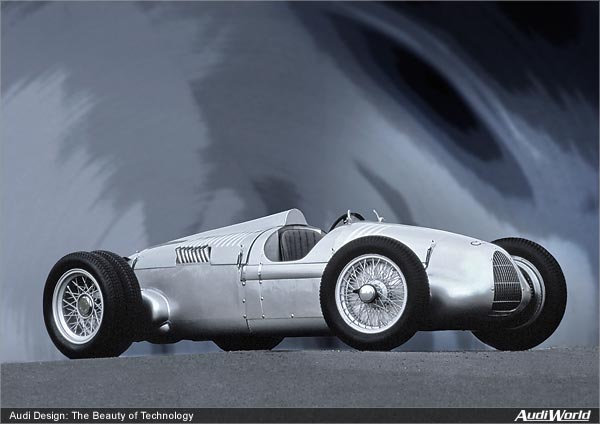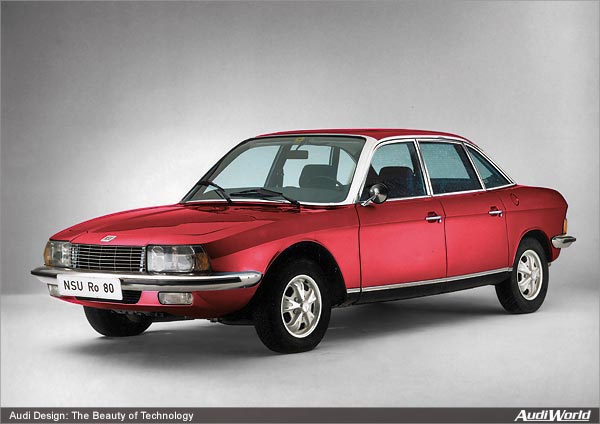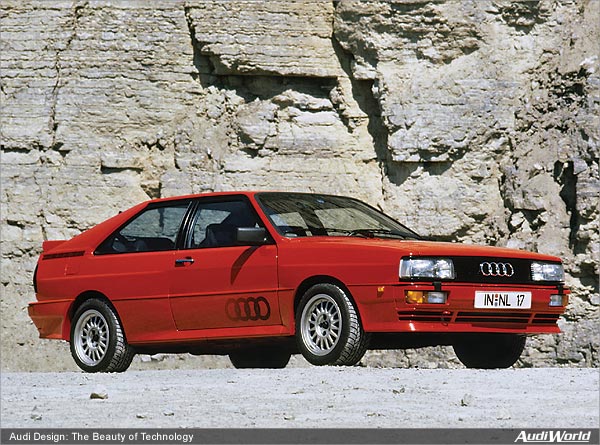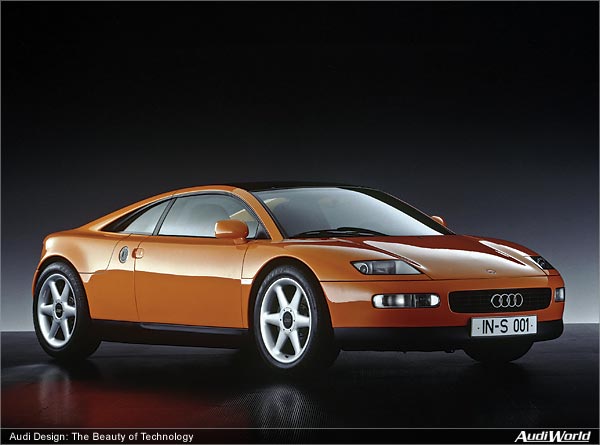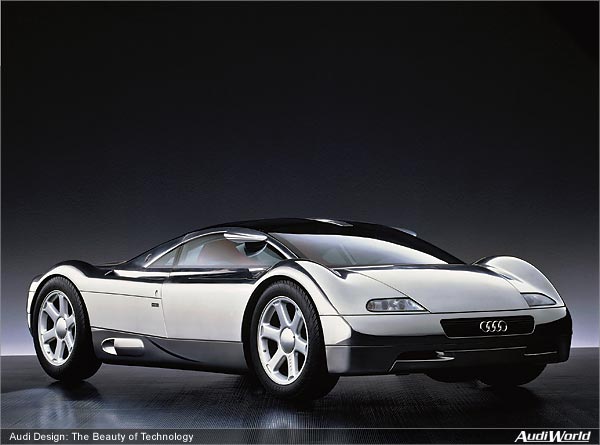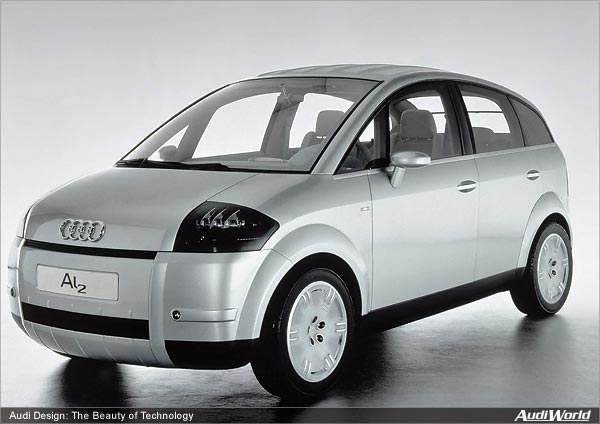Audi’s Design Icons – The Harmony of Form and Function
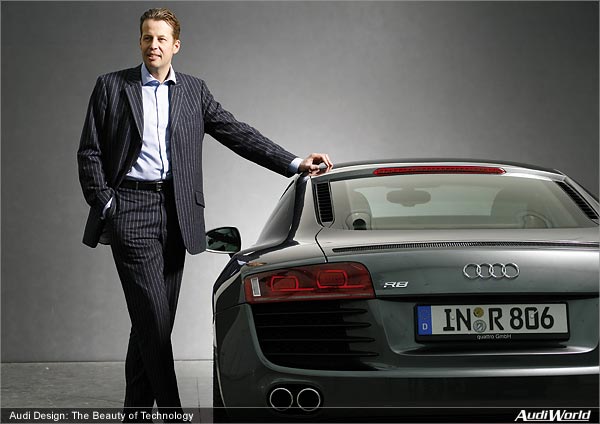
At Audi, automotive design is never an end in itself; instead, it always meets the challenge of expressing the Vorsprung durch Technik which is inherent to the brand with the four rings. This philosophy allows Audi continuity which already stretches back seven decades.
Audi design is distinctive it is the harmony of form and function, says Stefan Sielaff, Head of Design at AUDI AG. Above all, it is the proportions, the sculptures of our automobiles which portray the interplay of technology and design. This philosophy has a remarkable past it is the key facet in Audis history.
Sielaff demonstrates this continuity by means of six vehicles spanning the companys history. The Auto Union Type D racing car from 1938, the NSU Ro 80 (1967), the Audi quattro (1980), the quattro Spyder and Avus quattro concept cars which appeared in 1991, and the A2 from 1999 all constitute milestones of technology and design. Each of these cars unmistakably expresses its concept via its architecture, thus symbolizing the heart of the Audi brand: Vorsprung durch Technik.
The Auto Union Type D racing car from 1938
Only very rarely has sheer functionality radiated such pure fascination as did the Grand Prix racing cars of the 1930s, the legendary Silver Arrows. The Type D, raced by Auto Union in the 1938 and 1939 seasons, was the pinnacle of a spectacular design legacy.
As regards technical fundamentals, all Auto Union racing cars blazed new trails in their era: As in todays Formula One vehicles, the driver sat up front with the engine installed longitudinally behind him. This mid-engine concept the Type D had a three-liter V12 which delivered some 370 kW (around 500 hp) in its final configuration resulted in a truly innovative styling.
The side view of the Type D a purely in-house project at Auto Union was dominated by the domelike design, at the highest point of which sat the driver. With its formal uniformity, this last Grand Prix racing car from Germanys Saxony glimpsed very far into the future. Its long and high tail end terminated in two horizontal lips, which served to stabilize the flow of air in accordance with the state of aerodynamic science at that time.
The Type D conveys the emotion of an unbridled racing car, says Stefan Sielaff, Head of Design at AUDI AG. Today we would say that it had a cab-forward design: The driver sits toward the front; power propels him from behind. You get this same feeling in todays TT even though its engine is situated at the front. Its roof line was drawn such that its highest point is above the driver, as well.
The NSU Ro 80 from 1967
Its design alone symbolized its exceptional technological status. The paneled body was drawn up without any frills whatsoever, strictly focused on the essentials. Clear-cut edges throughout framed a wedge-shaped silhouette, and the unusually flat front end concealed a revolutionary drive train: a Wankel engine.
This rotary-piston engine was extremely compact. With its two rotors, it got 85 kW (115 hp) out of two chambers measuring 497 cm3 (30.33 cu in) each which sufficed for a top speed of 180 km/h (111.85 mph). And the engine ran like a turbine, with very little vibration. NSU had already used the Wankel engine in series production, namely in the open-top Spider back in 1964. At the time, this engine was seemingly the technology of the future. Early problems with reliability, however, prevented it from making a major breakthrough. Nevertheless, over 37,000 units would leave the assembly line by the end of Ro 80 production in April 1977, by which time NSU had already merged with Audi.
The Ro 80, which immediately became Car of the Year, was ahead of its time in every regard. Front-wheel drive provided the large sedan with considerable driving safety, while the semi-automatic three-speed transmission facilitated smooth shifting. And the avant-garde body allowed for an unbelievably low drag coefficient of just 0.36. The creative minds at NSU were so convinced of their design that they had the fundamental blueprint patented as a registered design as early as 1963.
The Ro 80 was a landmark for us, says Stefan Sielaff. Its design was light and modern; its transparency comes to life in the slender greenhouse. To this day, we make use of the solution with the third side window in our sedans. The Ro 80 added a lot of important ideas to the genetic code of our brand.
The Audi quattro from 1980
Even its unveiling was a special event: This Audi was not debuted in the exhibition halls of the Geneva Auto Show, but rather in a nearby ice rink. The car which Audi presented to the public on March 3, 1980 was not exactly a work of beauty, but rather a vehicle full of character.
This coupe exhibited Audis design language at that time in its purest form: boxy, cubical, rectilinear. Its fenders were slightly flared; its low greenhouse terminated in two horizontal C-posts. Spoilers at the vertical nose and at the high tail end improved the downforce. The Ur-quattro as it is called today radiated authenticity, power and authority; or, as people said then, it really hugged the ground.
The Audi quattro, which remained in the Audi portfolio until 1991, proved to be not only one of the most important models in Audis history, but also an automotive milestone. The Ur-quattro made all-wheel drive palatable and created new horizons in the physics of driving. Its five-cylinder turbocharged engine delivered 147 kW (200 hp) from 2.1 liters of displacement as well as dynamic power for drifting and sprinting.
The Sport quattro, the homologation version designed in 1984 for the Rally World Championship, had even more power. Thanks to its four-valve technology and aluminum crankcase, the five-cylinder engine delivered 265 kW (306 hp). Among the visual features of this limited-edition coupe with a shortened wheelbase were the angular, flared fenders. These can be found even today on the RS 6 and the RS 6 Avant.
According to the state of knowledge in those days, a boxy design was good for aerodynamics, says Stefan Sielaff. Audi made this its core focus for several years. The Ur-quattro was not an elegant car. It was conceived and designed to be strictly functional and precisely that led to its unique emotional appeal.
The Audi quattro Spyder from 1991
Wide, low and painted in glowing Fiji Orange: the quattro Spyder caused a stir at the Frankfurt Motor Show in 1991. It was Audis first thoroughbred sports car and the first Audi with an aluminum body. The cars body weighed a mere 140 kilograms (308.65 lb); in contrast to todays series-produced vehicles, the quattro Spyders body consisted of a load-bearing frame and a separate skin. The entire vehicle weighed just 1,100 kilograms (2,425.08 lb).
Due to this low weight, a standard volume-production engine more than sufficed: the 2.8-liter V6 from the Audi 100. Installed transversely behind the seats, the engines output of 128 kW (174 hp) allowed this two-seater to accelerate from 0 to 100 km/h (62.14 mph) in 6.0 seconds before reaching its top speed of 250 km/h (155.34 mph). A specially designed quattro powertrain distributed power to all four wheels.
At 4.24 meters (13.91 ft) in length, 1.77 meters (5.81 ft) in width and only 1.17 meters (3.84 ft) in height, the Audi quattro Spyder was a very compact car. Its 18-inch wheels with the classic six-spoke design exuded a great deal of power. The passenger cockpit depicted a flat, elegant arch; the glass roof was removable and even featured solar cells for powering the blower. Hundreds of people submitted options to purchase at dealerships, yet the quattro Spyder was to remain a show car.
The quattro Spyder and its tranquil design language was a statement of our design philosophy at that time, explains Stefan Sielaff. It certainly was not a trendy design; it was virtually timeless, which made it a typical Audi. Its interior featured a lot of aluminum parts, foreshadowing the character of the first TT.
The Audi Avus quattro from 1991
Mere weeks after the quattro Spyder, Audi launched a second rocket: the Avus quattro high-performance sports car captivated onlookers at the Tokyo Motor Show in the fall of 1991. The Avus quattro also boasted a lightweight aluminum body: the frame weighed a mere 52 kilograms (114.64 lb), the unpainted and polished surface 100 kilograms (220.46 lb).
This show cars second technological sensation was its engine. Positioned longitudinally ahead of the front suspension, the six-liter units three cylinder banks were in a W configuration: the precursor to todays A8 W12. Thanks to a powerful 374 kW (509 hp) and a weight of only 1,250 kilograms (2,755.78 lb), the Audi Avus quattro topped out at 340 km/h (211.27 mph)! A sophisticated quattro drive train conveyed the power to the road. To optimize the distribution of weight, the six-speed manual transmission was fitted between the front wheels. All wheels were attached to double triangular wishbones; the electronically controlled rear wheels enhanced the cornering dynamics.
At 4.42 meters in length (14.50 ft), this show cars design remains irresistibly stunning to this day. The flat drivers cockpit was remarkably close to the vehicles front end. The long wheelbase of 2.80 meters (9.19 ft) created a large gap between the powerful 20-inch wheels. In addition, the fenders, the sides and the curved roof which bore the exterior mirrors collectively formed a single glistening wave.
The Avus quattro is one of Audis major icons, proclaims Stefan Sielaff. Its sculpture with the pronounced cab-forward design pays homage to bygone designs; it echoes the streamlined racing cars of the 1930s. Yet the Avus quattro also proved to be forward-looking: the Audi R8 TDI Le Mans, a current concept vehicle, also has a NACA duct in its roof as did the Avus quattro.
The Audi A2 from 1999
Average consumption of just 2.99 liters of diesel per 100 km (78.67 mpg): this extremely ambitious target had already been specified when Audi began developing the A2 in the mid-1990s. Three factors would prove to be indispensable in achieving this: highly efficient engines, low weight and an excellent drag coefficient.
Firstly, Audi engineers turned to cutting-edge three-cylinder and four-cylinder engines. Among them was the 1.2 TDI, which was to break the three-liter barrier. Audi was able to meet weight requirements thanks to the ASF (Aluminum Space Frame) construction principle. The basic version of the A2 weighed just 895 kilograms (1,973.14 lb).
The requirements of aerodynamics led to an undeniably unique two-box design. The body of the A2 tapered considerably toward the rear and the coupe-like roof line sloped markedly toward the ground. No windshield wiper was needed for the decidedly curved rear window: a long spoiler protected it against rain and dirt. The A2 1.2 TDI had a sensational drag coefficient of just 0.25 an accomplishment which remains unbeaten up to the present day.
For the passengers, this concept entailed no sacrifices whatsoever. On the contrary: as many as five people and their belongings had plenty of room thanks to the upright seat positions on board the A2. This facilitated comfortable and, if necessary, extremely quick travel.
The A2 epitomizes Audi design of the late nineties, points out Stefan Sielaff. It was puristic and plain, and practically dogmatic in design. It was not an emotional vehicle sensible more than anything. But it embodied that timelessness which designers always aspire to. Even today, the A2 strikes a bold pose. It is one of the cars which has been most significant for Audi.
|

